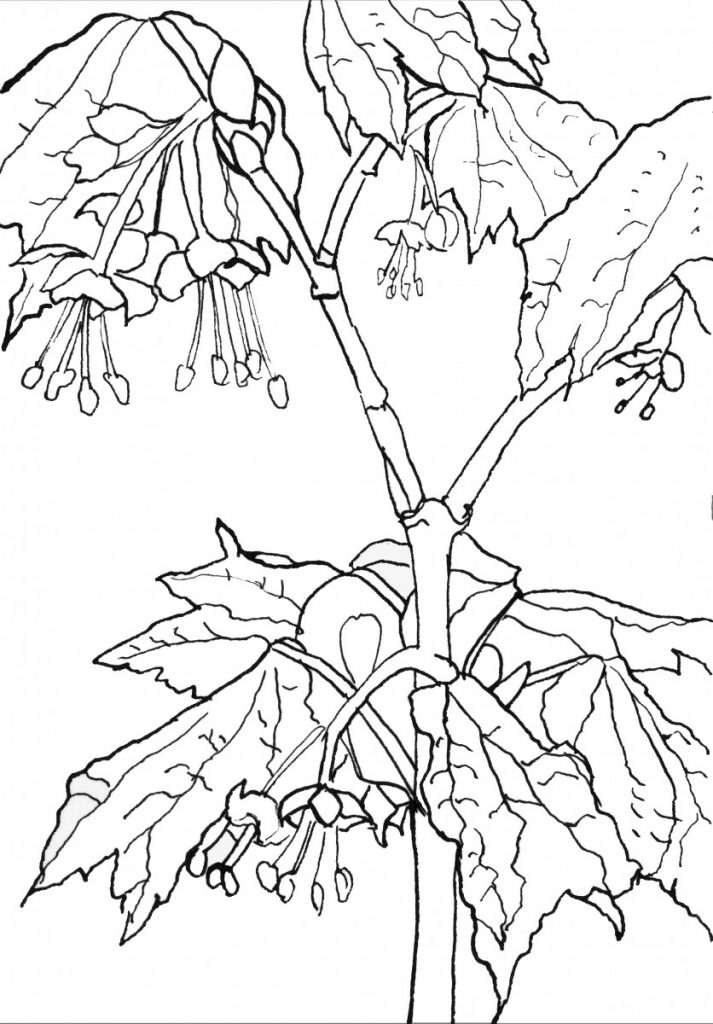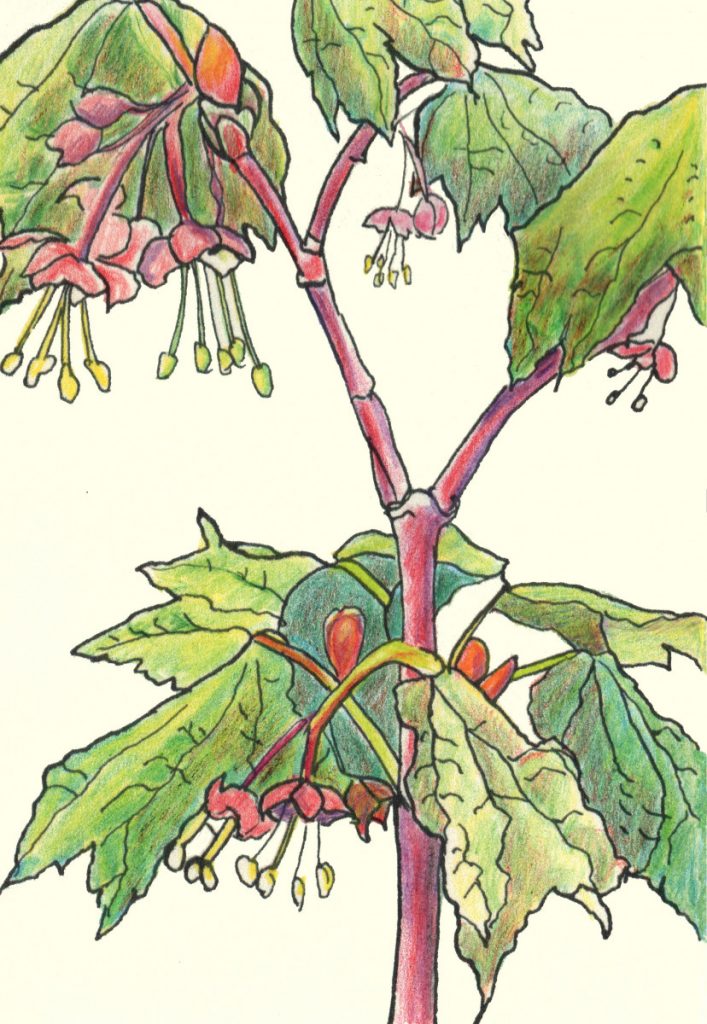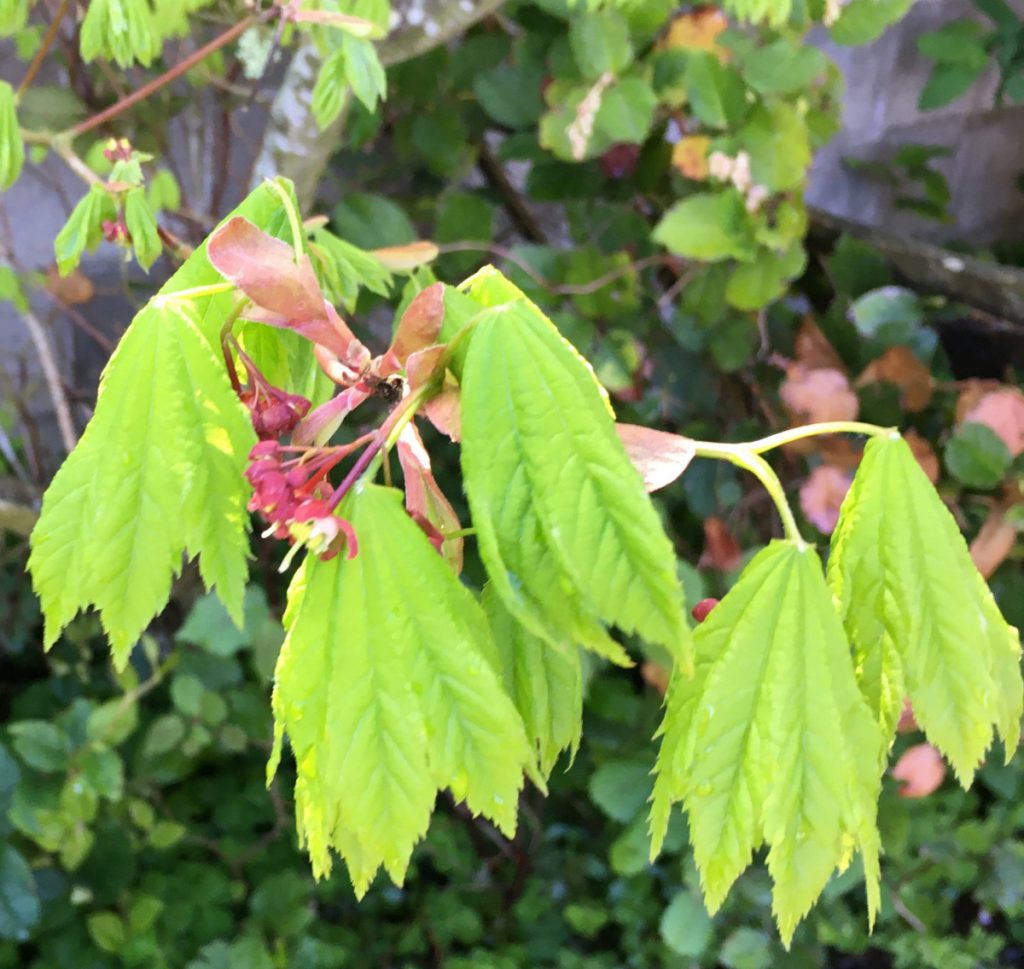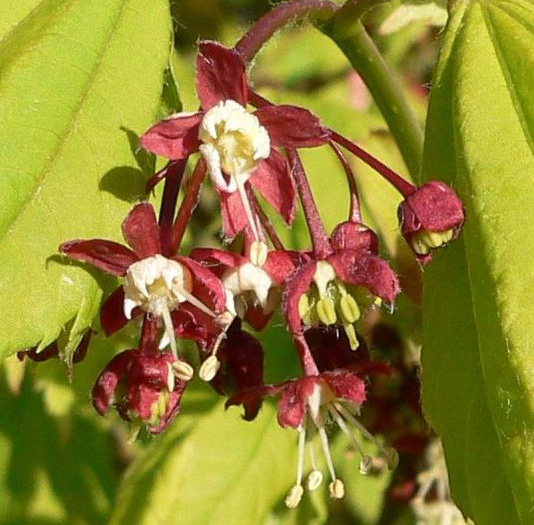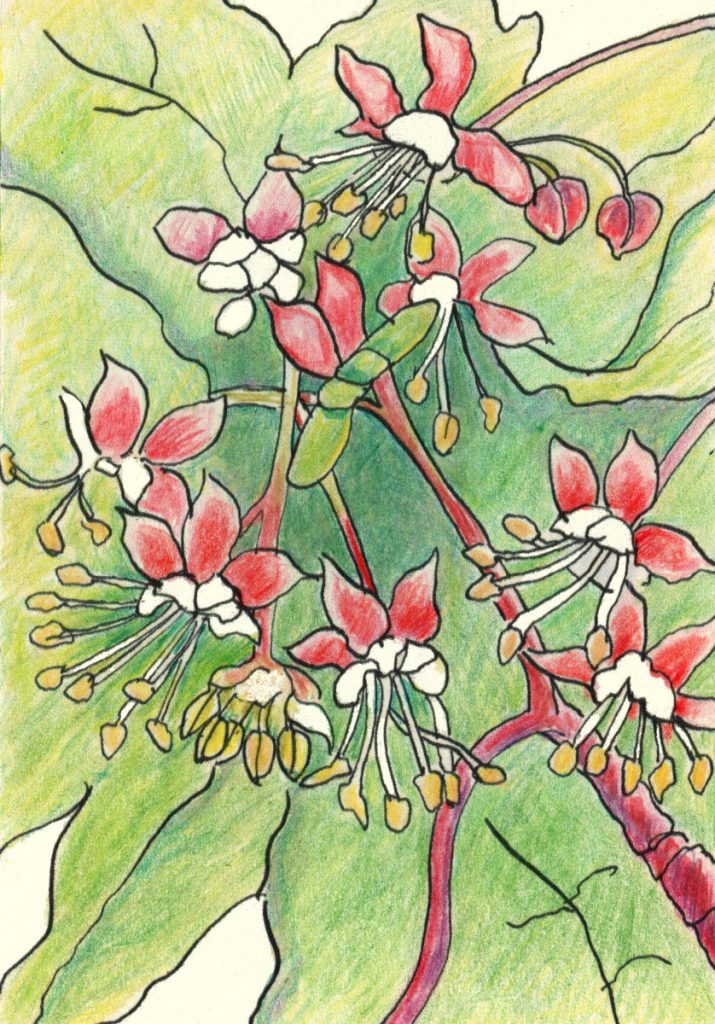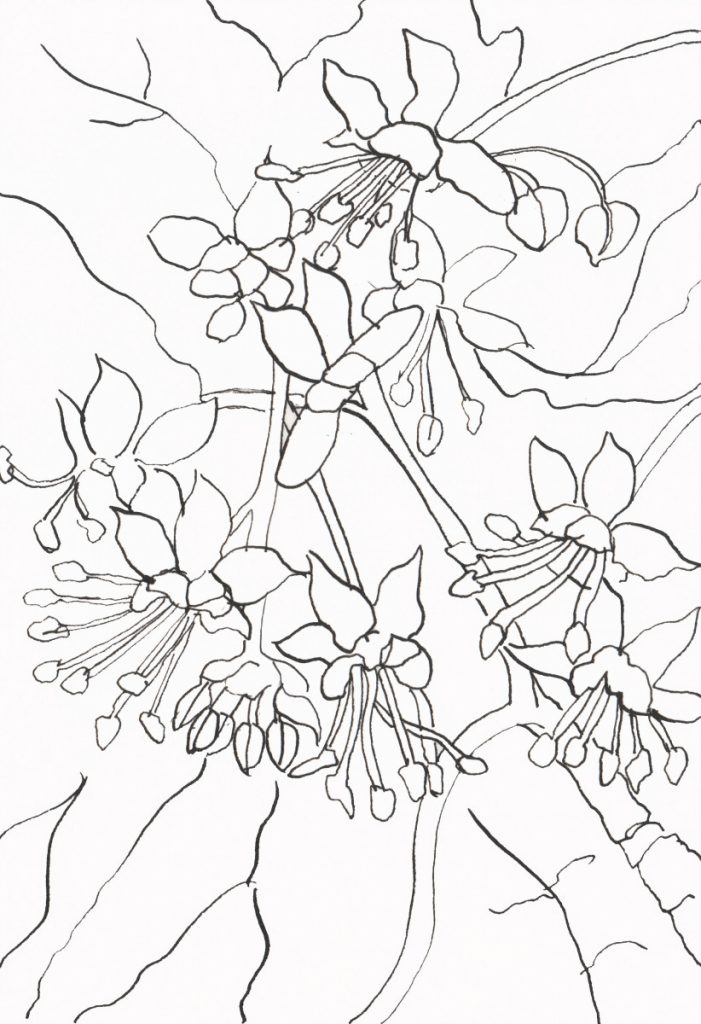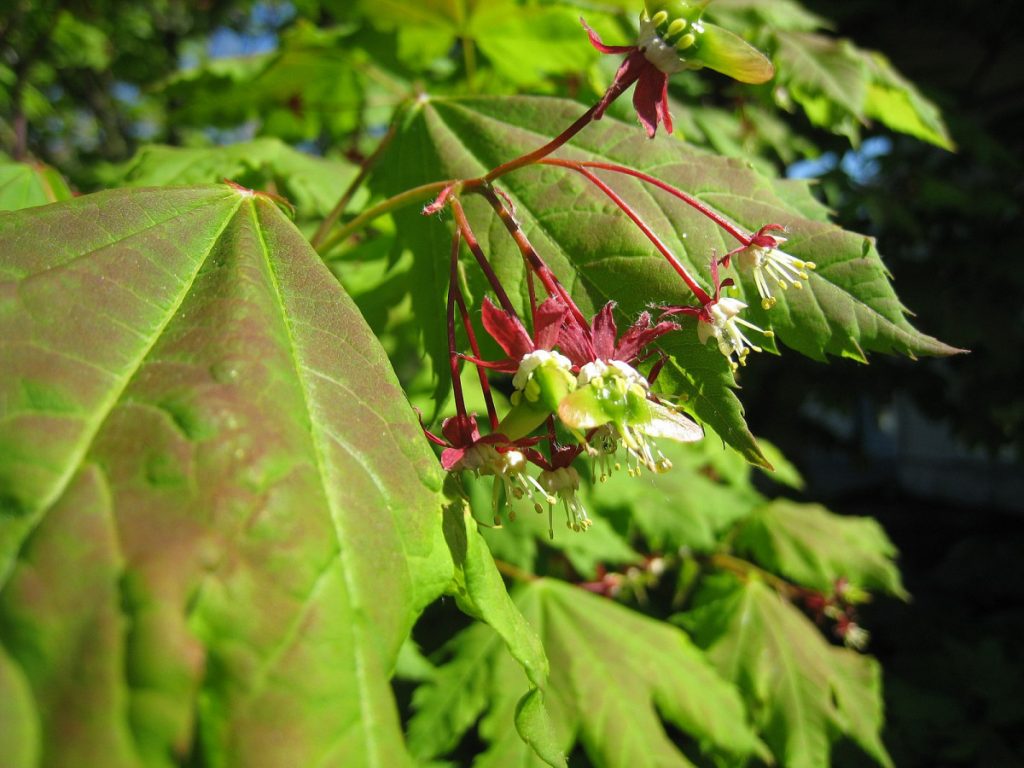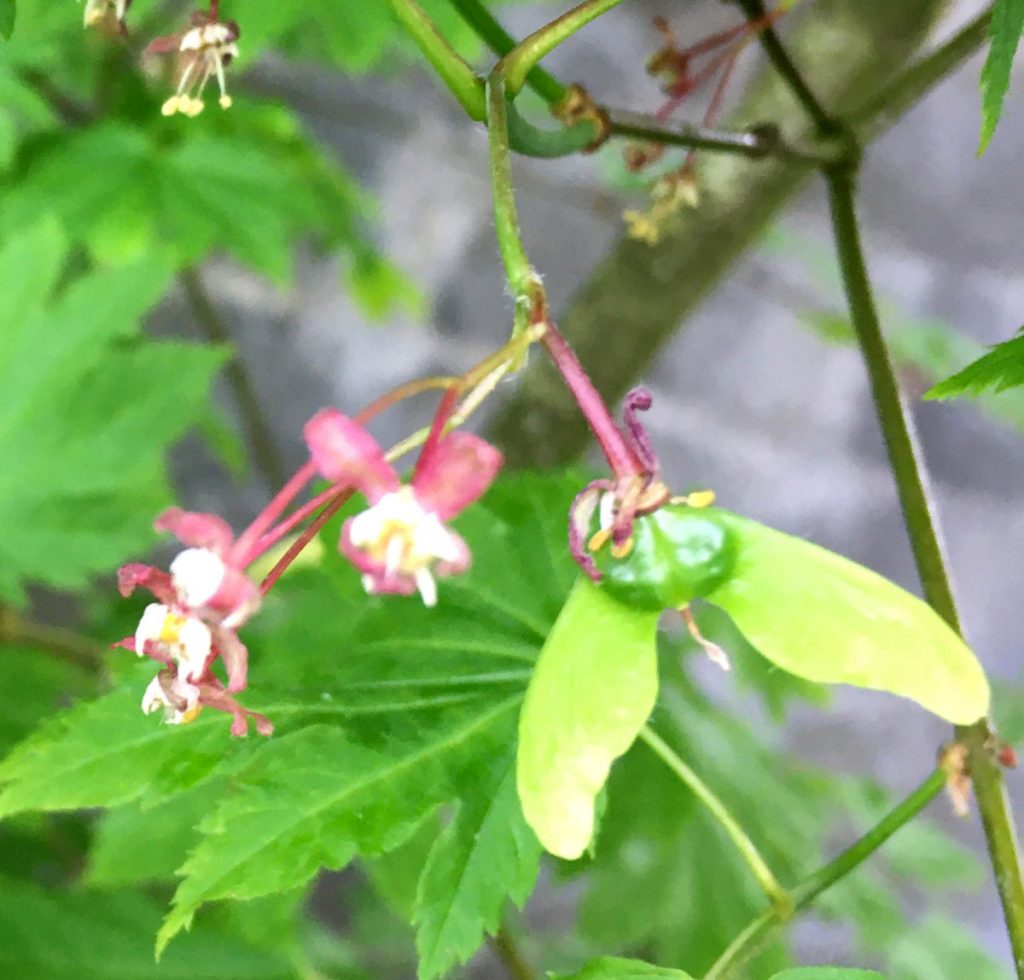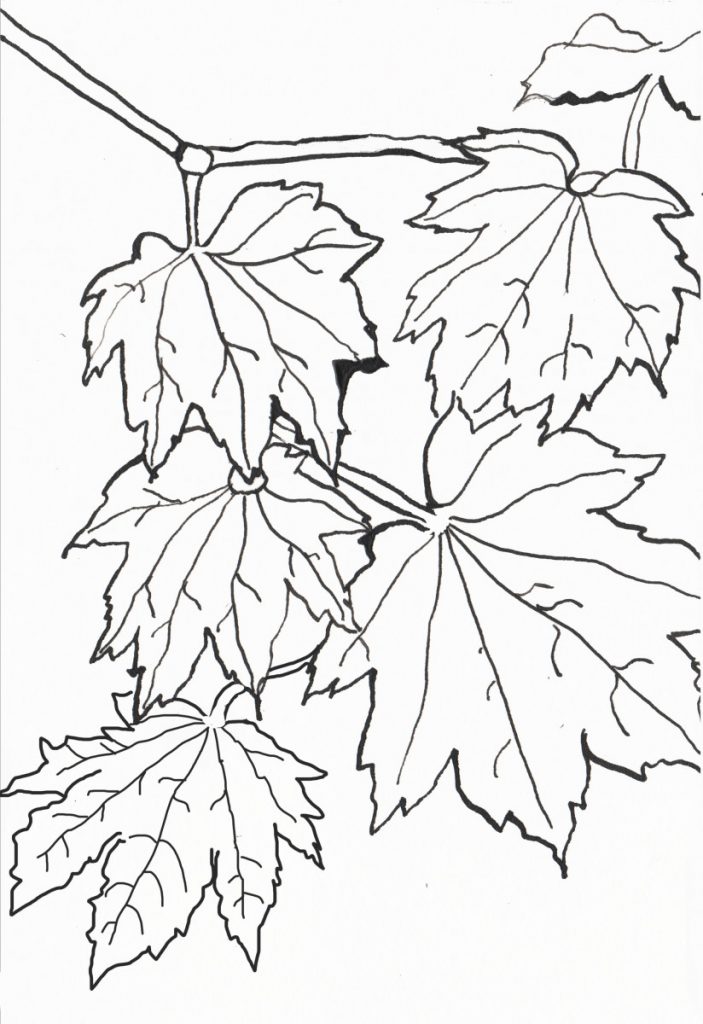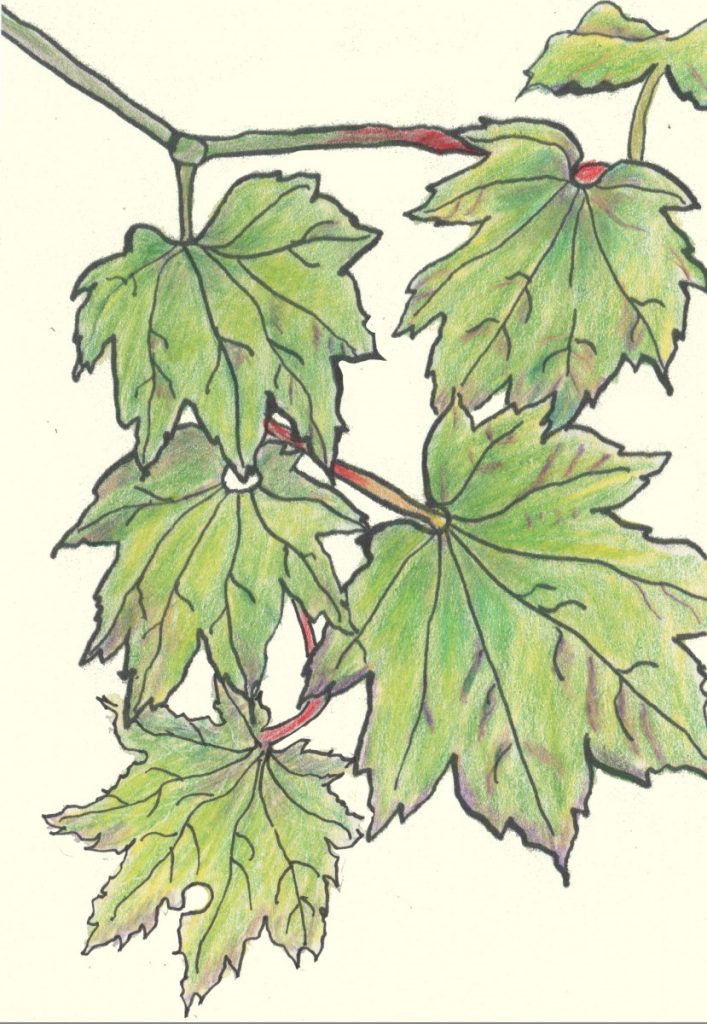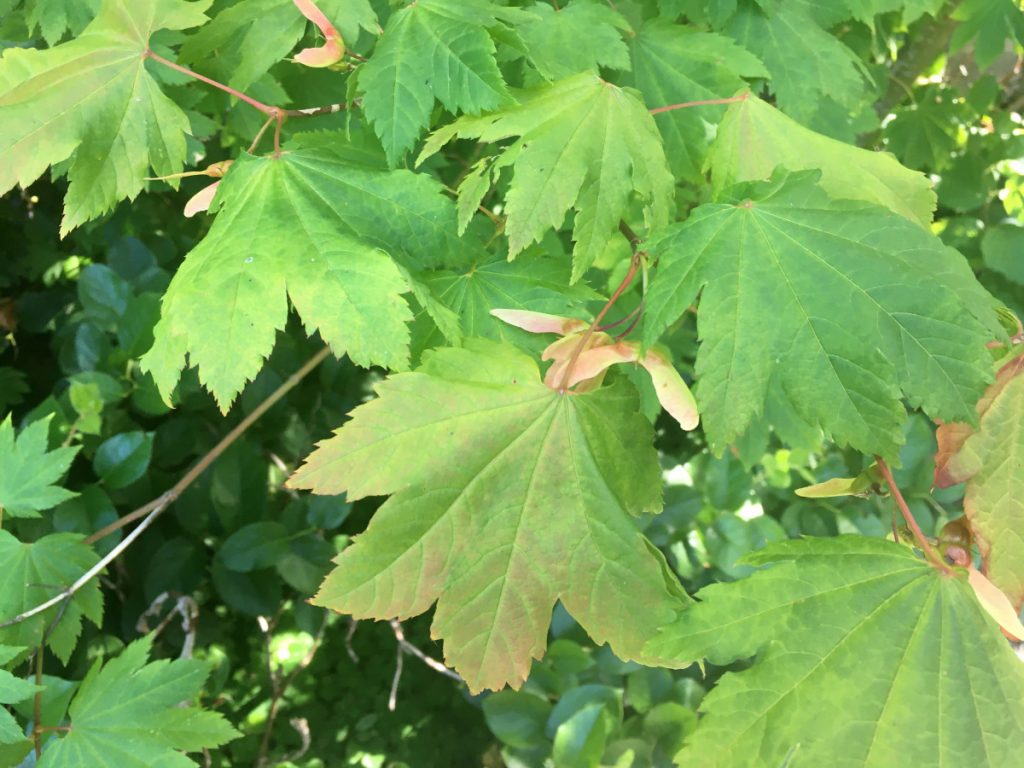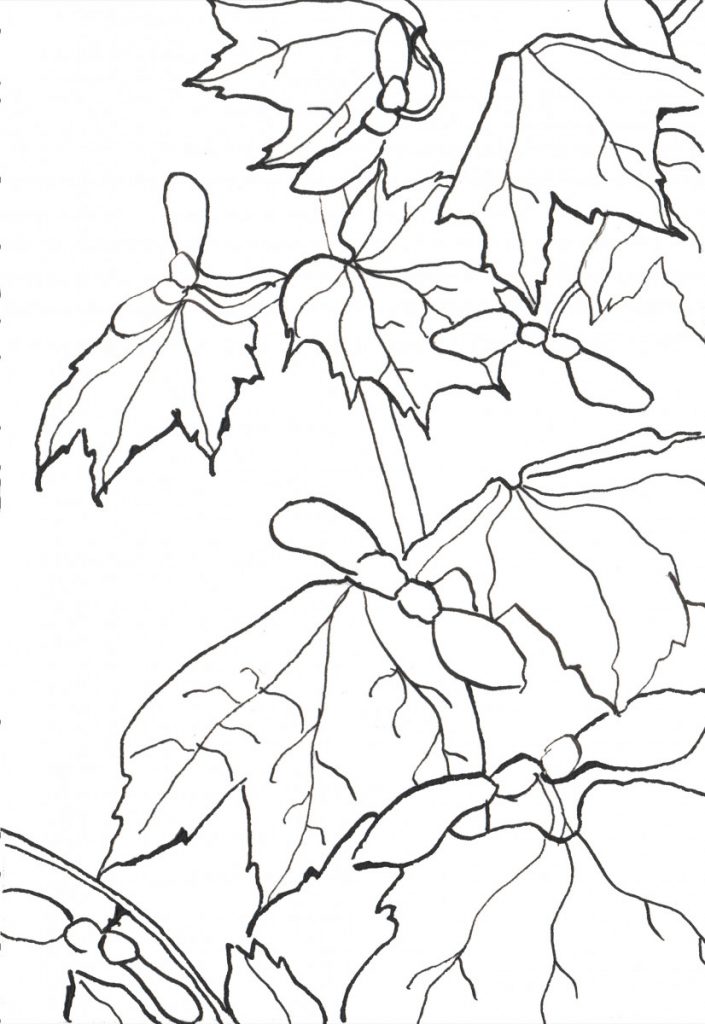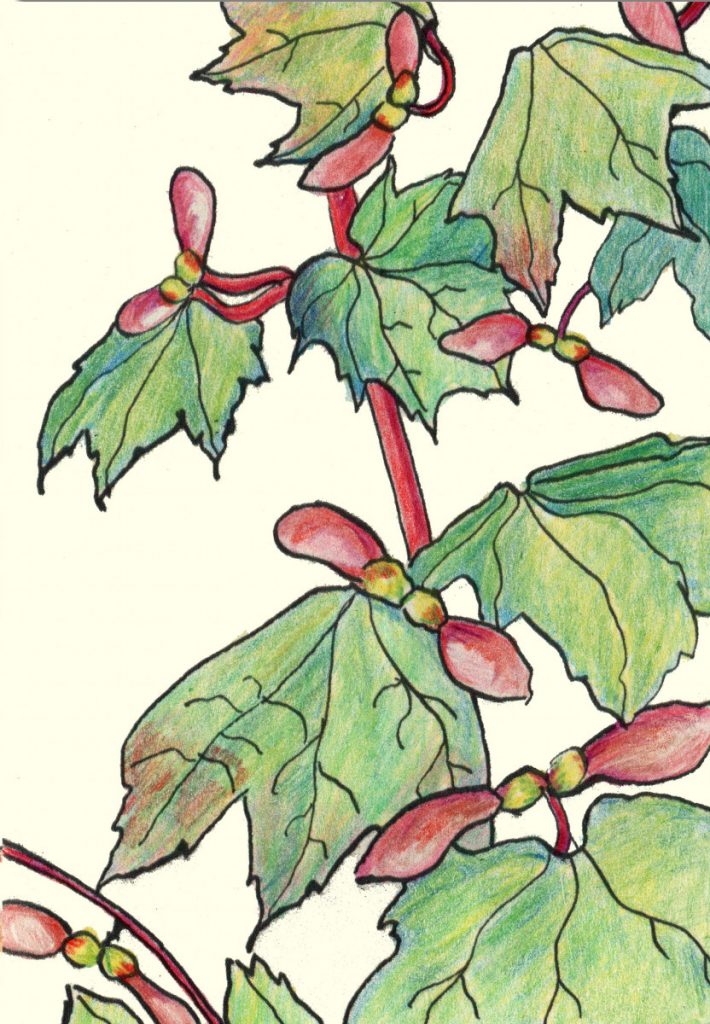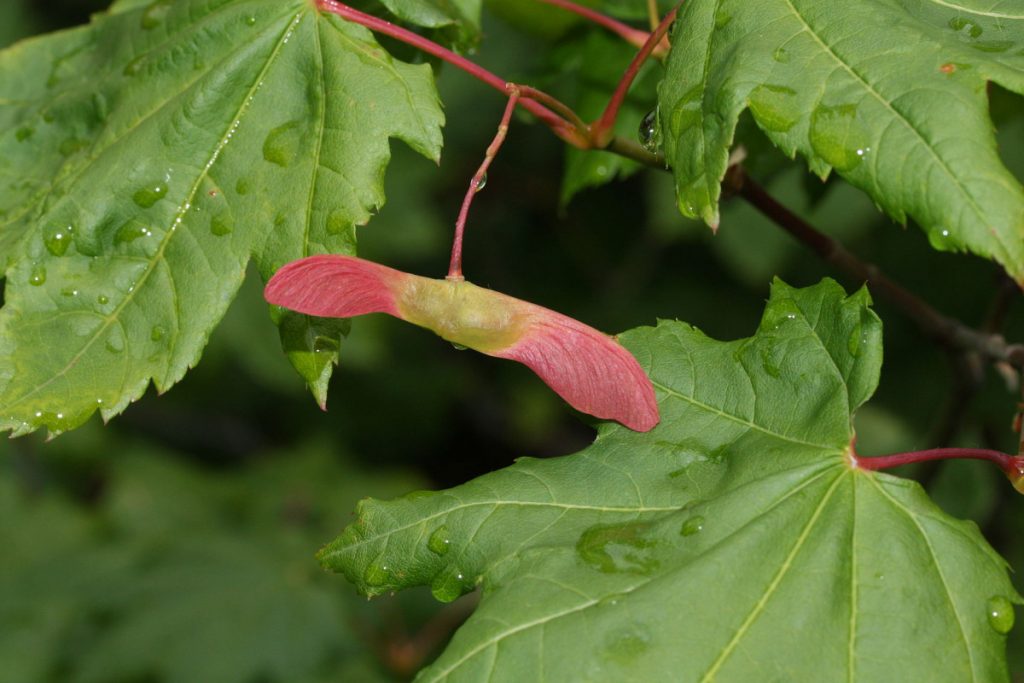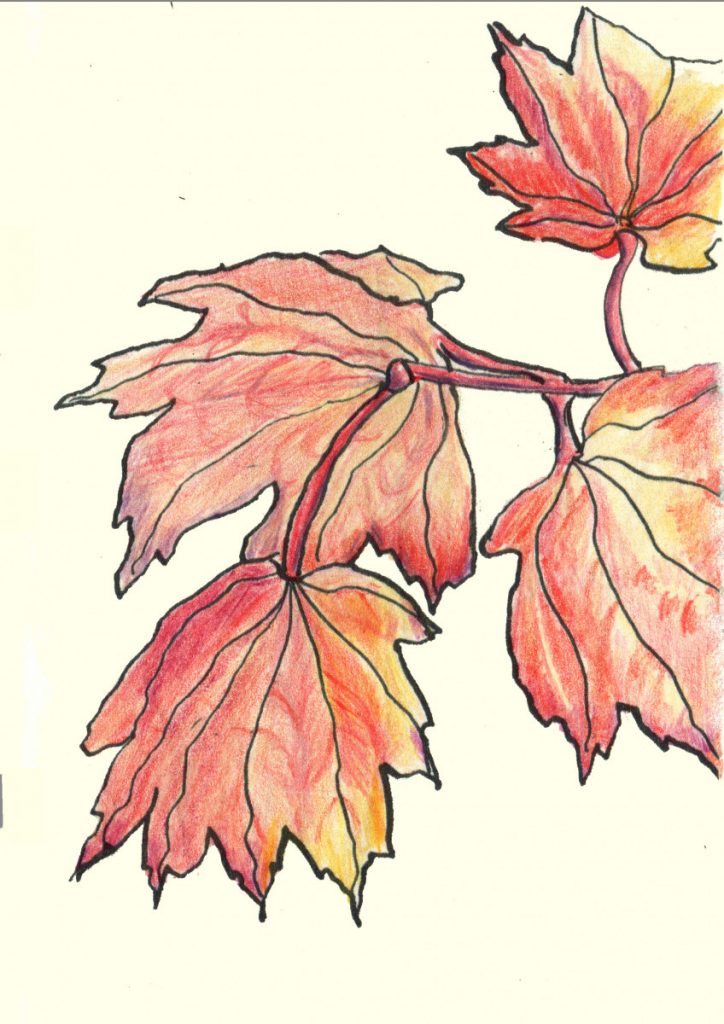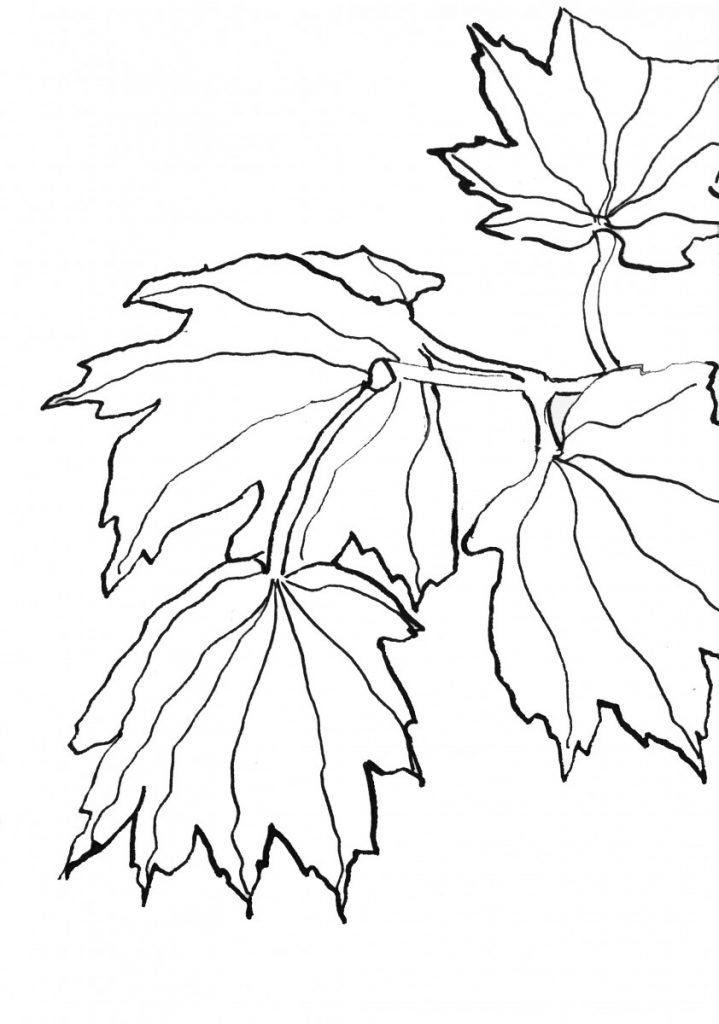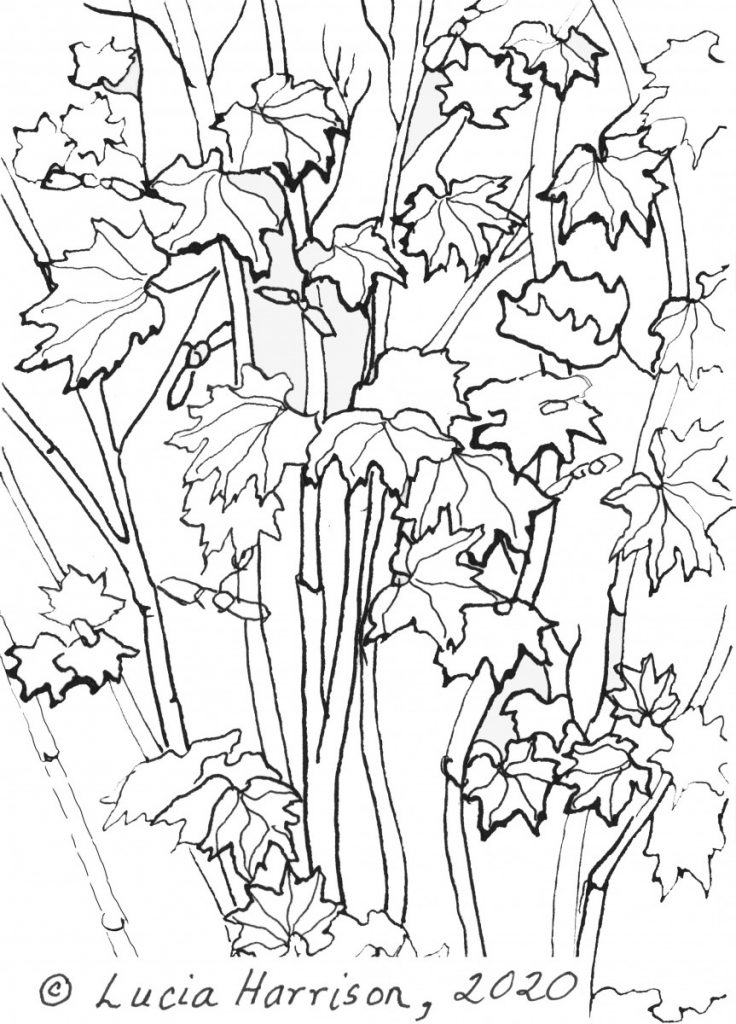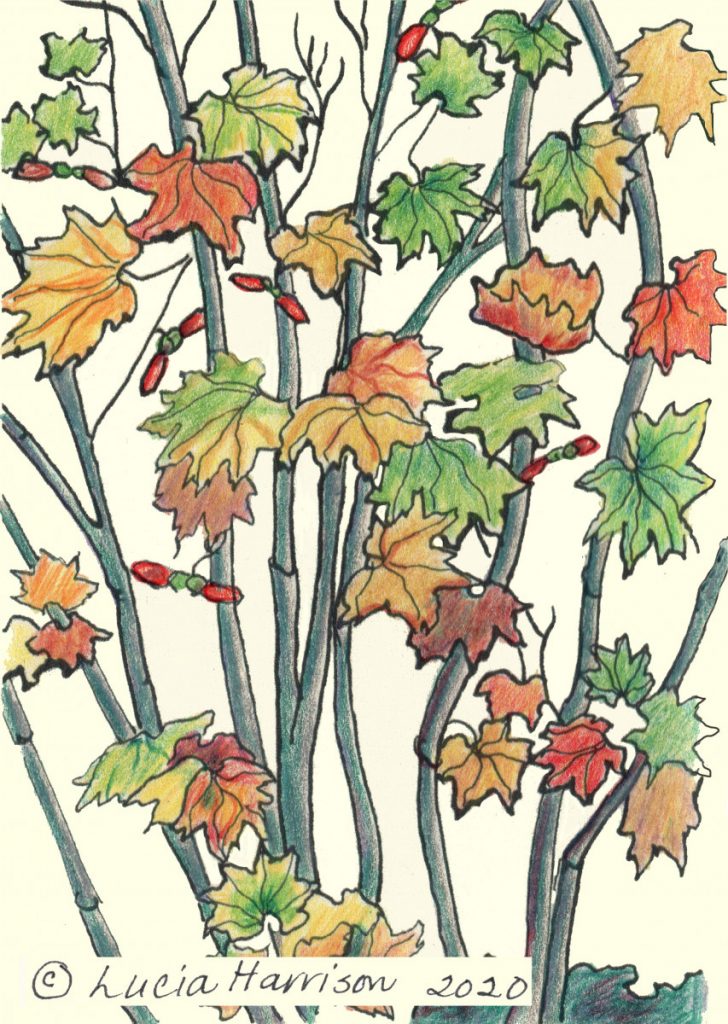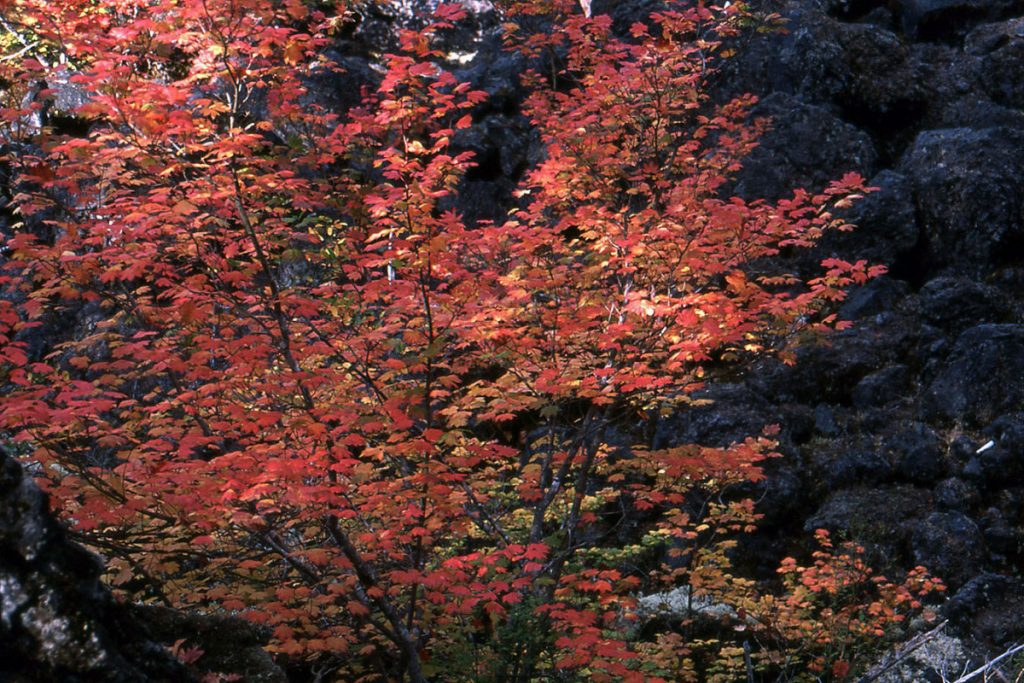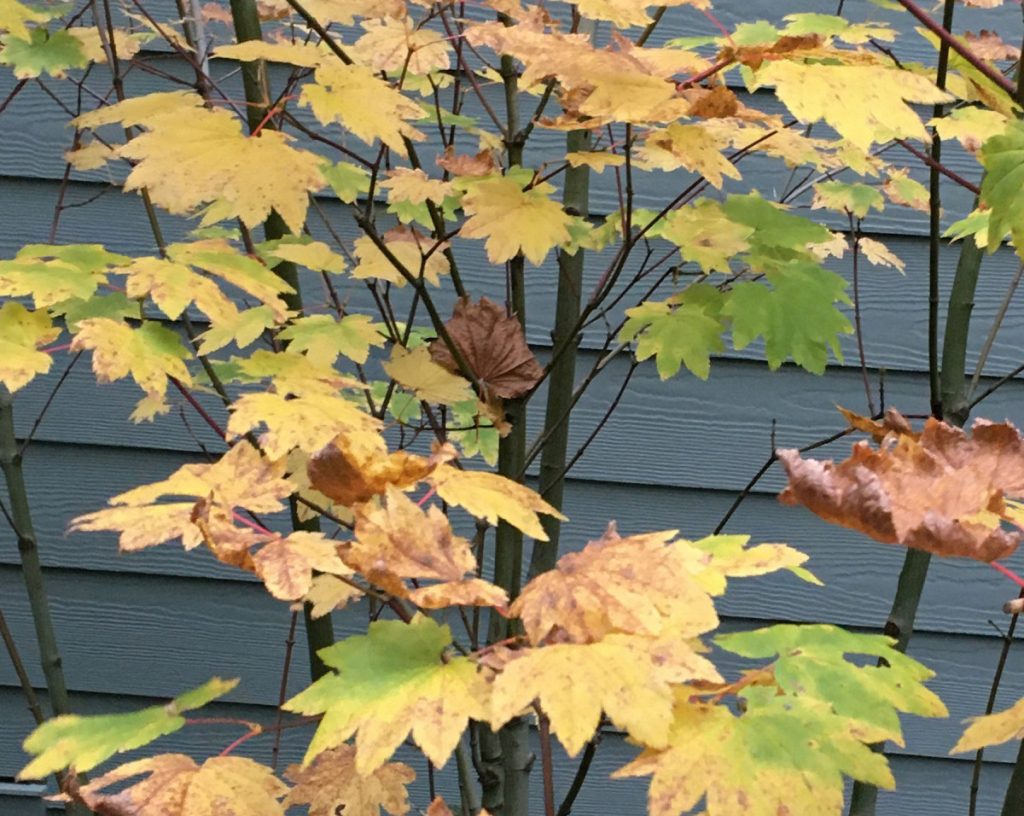
Scientific Name: Acer circinatum
Pronunciation: A-ser sir-SIN-a-tum
Vine Maple is a deciduous multi-trunked shrub or small tree that grows 10-25 feet tall and 10-15 feet wide. It prefers partial shade and requires moist to dry soil.
In the spring, Vine Maple leaves unfold and its flowers bloom, providing nectar to bees.
Gradually, in late spring, the flowers turn into samaras, the Vine Maple’s Winged Fruit.
Click on photo to enlarge photographs.
In late spring and summer, the leaves fully open and provide habitat for butterfly and moth larvae. They also provide cover for birds.
Click on photo to enlarge it.
In late spring and summer the samaras turn bright red.
Anatomy of a Samara
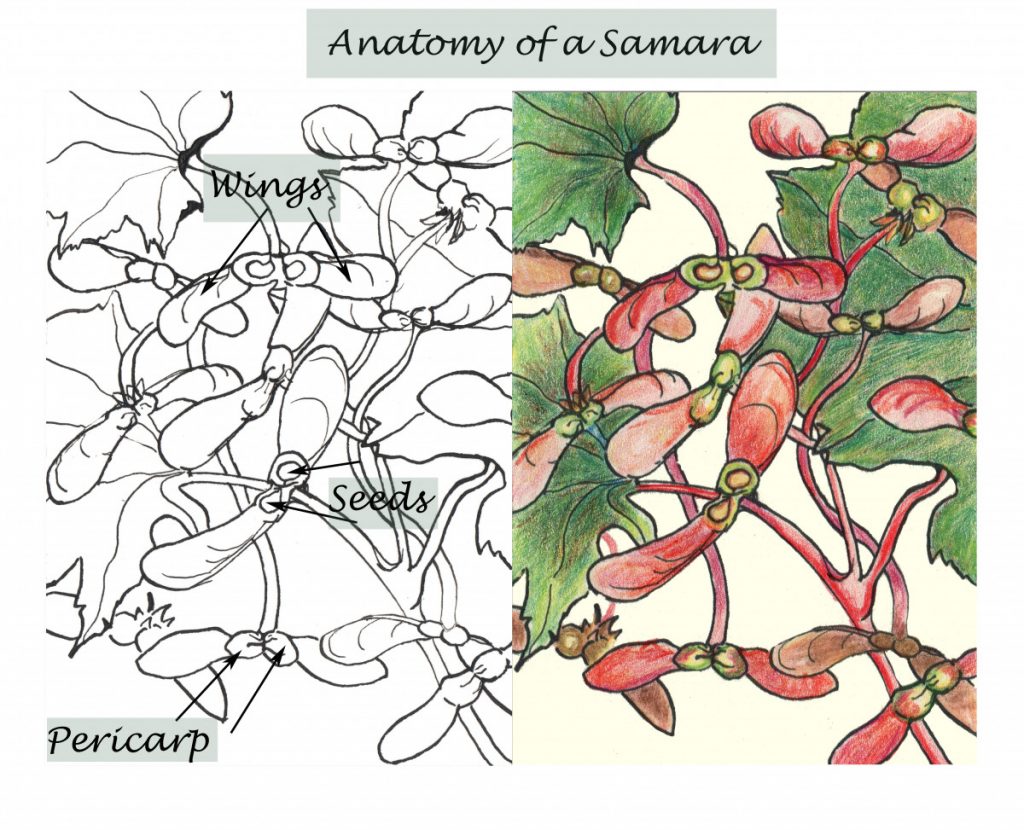
The samaras gradually turn brown by late summer. Ripe seeds feed birds like Evening Grosbeak and Northern Flickers. Mammals like squirrels and chipmunks also like to gather, store and eat the seeds.
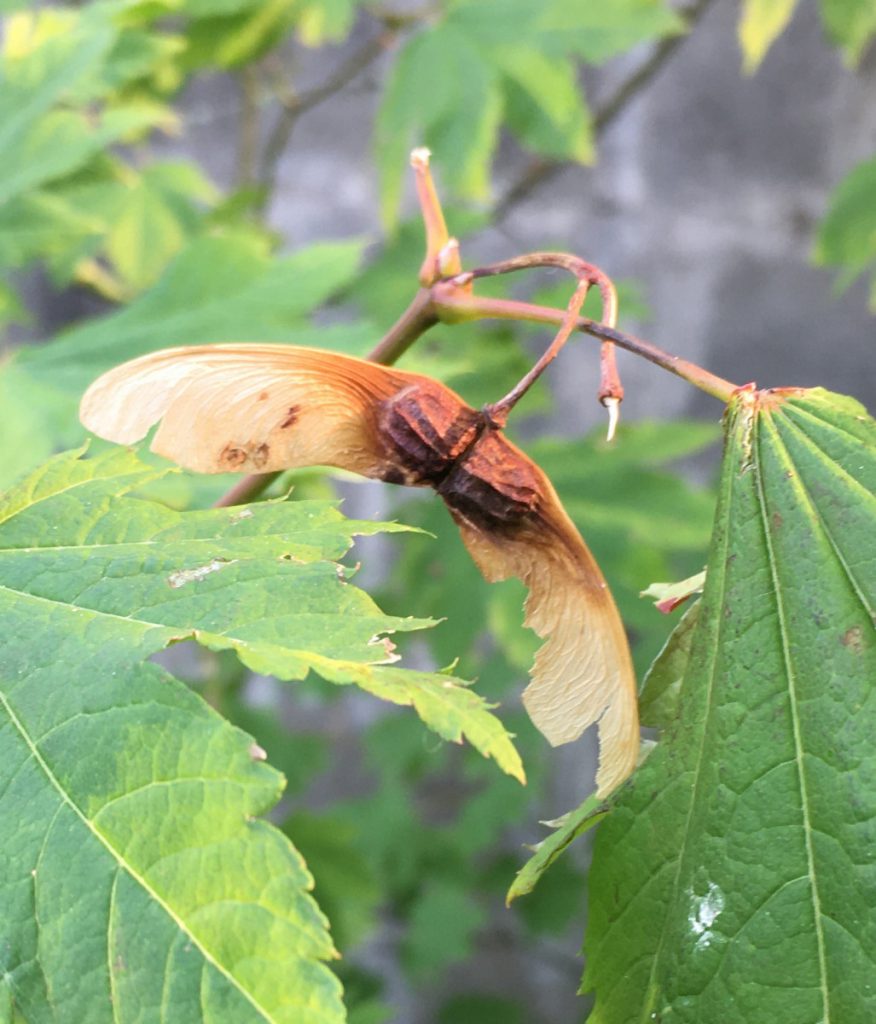
In the fall, the Vine Maple leaves turn from green to a range of oranges, browns and reds. At high elevations, like at Mt.Rainier National Park, they turn bright red.
For more detailed information and photos of Vine Maples go to the Washington Native Plant Society’s Starflower Image Herbarium.
Another good resource is the Oregon State University’s Landscape Plants Website https://landscapeplants.oregonstate.edu/plants/acer-circinatum
University of British Columbia Forestry Faculty have made a video about Vine Maple. To view it, click here:
To see a Vine Maple Plant go to the Tacoma Metro Parks Native Plant Garden at Point Defiance Park. Click here for directions, a walking guide and information. https://www.metroparkstacoma.org/place/northwest-native-garden/


